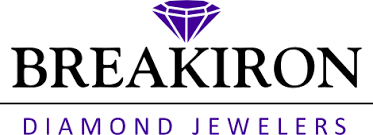
Cal Wilson / October 17, 2022
Cellular Plan and Fee Complexity Demystified
This article was originally posted in NoJitter on August 24th, 2022.


This article was originally posted in NoJitter on August 24th, 2022.

The following article was shared by EBN on October 11th, 2022:
 In recent years, creating supportive environments and robust benefit packages for employees became table stakes. As the economy falters, employers are looking for new solutions to financial stability — but those solutions can’t come at the cost of employee loyalty.
In recent years, creating supportive environments and robust benefit packages for employees became table stakes. As the economy falters, employers are looking for new solutions to financial stability — but those solutions can’t come at the cost of employee loyalty.
According to Principal Financial’s 2022 Well-Being Index, 65% of businesses surveyed anticipate a recession in the next six months, and 63% report having already been negatively impacted by inflation. And yet, more employers have turned to increasing prices (64%) and reducing operating expenses (62%) than have reduced or stopped hiring (42%). In fact, 55% of businesses said they will not reduce salaries if hit with a recession, and 47% said they will not reduce benefits.
“Organizations have fought so hard for every hire, and employee loyalty is incredibly important right now — and probably always should have been,” says Amy Friedrich, president of U.S. insurance solutions at Principal. “Instead, they’re looking at other ways to cut costs.”
In her role, Friedrich is primarily focused on insurance solutions for small and mid-size operations, and is also responsible for Principal’s 1,200 affiliated financial professionals. As financial wellness has become of increased importance for both organizations and their workforce, she’s working to help businesses embrace income protection products, while building flexible benefit plans that provide vital support to employees in need.
Friedrich recently spoke with EBN about shifts in the market, boosting education and understanding of benefits for small- and mid-size business owners, and why a back-to-basics approach to benefits is helping organizations find stability in times of stress.
It’s a little bit of a back-to-basics story. Everybody wanted to talk to me about dental and vision and those buzzier benefits — and I get it, those are interesting to talk about. What the pandemic really brought into sharp focus for these business owners is the need for a group life policy or even a short-term disability policy. If you hadn’t done the basics with some of your life and disability coverages, your employees were really exposed. People want to offer their employees some kind of income protection if they have to be away from work, or something that would provide coverage in the scenario of the death of an employee. Going back to basics isn’t always an incredibly exciting story, but it’s a pretty profound shift, at least in the small and mid-size market.
I think it’s half and half. I had a conversation with a business owner recently who said they couldn’t live with themselves if they weren’t providing the basics — they’d rather take changes to their own salary first. But at the same time, the conversation has changed and employees are more frank than they used to be. Some would say they’re more demanding, but they’re just being clearer about what they hope for and expect from an employer: to feel safe at work and like their income is going to be protected, and that they’ll have something for their family to fall back on if something happens to them.
We start by looking at what we can afford in year one or year two. Employers always guess the cost of these things way too high, to the magnitude of three to five to seven to 10 times more than they’re actually going to pay. So when they’re talking about putting a disability benefit in place, which might actually cost $200 to $300 an employee, their guesses are in the $2,000 range. There’s still a fundamental gap going on when it comes to the cost of benefits. But the marketplace has gotten more efficient, and has more plan-design flexibility than it used to. And when you use that plan-design flexibility to get basic coverages in place, things like income security and protection products can get people to a place where their stress diminishes over time.
The businesses we work with are very aware of inflation, they believe a recession is coming and they’re worried. But we asked those businesses what actions they will not take in a recession, and their top choices were really interesting. They said they would not reduce salaries. And they said they would not reduce benefits offered. Historically, whether you were a large or small business, those are often the first places companies go to reduce budgets, trimming benefits or laying off staff or reducing salaries.
It’s appropriate to have a little caution there, because if things continue for six months beyond where we are, nine months, 12 months, there will be a point when small and mid-size employers will have to start going after some of these things to change them. But I can tell you, it’s near the bottom of their list in terms of things they want to impact.
You’ve heard the discussion that this is sort of the strangest pseudo-recession we’ve ever seen there, and one of the reasons there isn’t as much firm agreement on some of the recessionary metrics is because wages and job growth have held up so firmly. My guess is that, at least through the summer, small businesses — which make up a good part of the GDP — were holding up some of those wages and job numbers, steady to upward.
For small employers, they really have — almost to their detriment — taken care of their employees. When we look at burnout compared to a year ago, employees are feeling more stress for sure, but about 40% of them would say that. When you ask employers, compared to a year ago, nearly 61% say they’re feeling more stressed. So business owners need to take care of themselves too, and make sure they’ve done the right things for business continuity.
We’ve focused so much on the structure of benefits and PTO and space to manage child care and elder care for employees, but we need to also be giving employers great advice and guidance on taking care of themselves. And beyond their personal health and wellness, the health of their business: have they revisited their business plan? Have they done the right succession planning? Do they have an informal understanding of the valuation of their business? Some small employers have given those basics up in the past year or two, but it’s another back-to-basics concept that we need to get back to.


On behalf of all of Schooley Mitchell, we’d like to extend a huge congratulations to Stephan Lafreniere on receiving our award for Online Presence. Thank you for all your hard work this past year!

Pictured below are Schooley Mitchell consultant Fred Carter, president, and Ron Whitmer, immediate past president, at the Port Summit Rotary Club’s 8th Dizzy Duck Derby. This fun event raised money for the Port-Summit Rotary Club to continue serving our communities.

The following article was shared by Entrepreneur on September 24th, 2022:
Regardless if you’re a small startup or an established corporation, there will surely come a time to learn how to save money and cut costs. This subject is especially relevant…
By Rob Press
Learning how to save money and efficiently lead a business without wasting resources is a valuable skill. Although planning is a must, you often can’t foresee things like pandemic outbreaks, wars nor the financial struggles that follow.
So, how can a business become more resilient in times of trouble? There are some ways to adapt to a possible crisis even before it strikes.
Based on recent Zippia research, 22% of business startups fail in their first year. Additionally, the main reason for small businesses to fail was connected with cash flow problems. Naturally, a lot of your business success depends on planning your finances and setting your budgeting right.
Analyzing your current efficiency is the first step of every good business plan. So, we’ll start by performing an audit on all back and front-end operations, workflows, and processes.
Your goal at this stage is to simply gather data, and learn to manage your cash flow and expenses. You need to figure out the ROI and the value of every activity. Additionally, you have to analyze your cash flow and see if your payment dynamic is manageable or if you need to change things. The mentioned information will help you isolate the gaps and inefficiencies.
For instance, make a list of your current fixed and variable expenses. Then, see where you can cut costs and optimize.
Once you’ve analyzed your current business operations, it’s time to visualize and plan what you want to achieve. Here’s where you take action, set a budget or a goal, and stick to it.
Open-source, AI, and cloud technology can be of immense help when trying to cut costs. Many free or affordable tools can help you automate and streamline different operations.
For instance, if you have remote or shift workers, you can try using staff scheduling software to make the entire process more efficient and reduce human errors like overlaps or missed shifts.
Likewise, try to go paperless and start doing business in the cloud. It will give you one centralized data storage location and allow you to allow or deny access to different documents and files for different job roles.
Think of how much you’ll save on storage costs alone by going paperless!
Additionally, automating manual, daily, labor-intensive operations saves time. And, time is money! Data entry is the best example of a time-consuming task you can automate.
In some cases, businesses might be forced to lay off employees due to a tight budget. In cases like these, automation can also help replace human labor whenever possible. Of course, laying off employees equals losing human capital. If it comes to that, learn to adopt technology as an alternative.
With all this said, we have to mention that automation is not always the cheapest option. For instance, automating an entire assembly line in a factory requires a large upfront investment. So, shop around for solutions in advance to have the correct financial projections.
Finally, on the subject of cutting costs, we can’t forget about virtual technology which allowed many companies to operate remotely, especially during the pandemic outbreak. If your budget is tight, use technology like Zoom instead of traveling for in-person meetings. Or, collaborate on Google Drive and Google Meet and sublet your office space. Get creative and take advantage of technology!
Leading a successful business means constantly observing the market. Your business goal is profitability, so you have to source the best quality product for the most affordable price you can find. Don’t get stuck with the first supplier you started working with if there are better ones on the market.
If the product price goes down and you can find suppliers that offer a better price vs. value ratio, ask your supplier to match the price. Otherwise, give a chance to a different supplier.
Carefully read and compare supplier contracts. In many cases, especially if you buy in bulk, you become eligible for discounts. Don’t be afraid to practice your rights and negotiate the prices.
In the end, getting a better price from your supplier means cutting costs and improving the overall profitability of your business.
However, it’s not just about discounts. If you plan on designing a way to save costs sustainably, you’ll need to fix your end-to-end supply chain. Often, this includes third-party services, fulfillment centers, distribution centers, freight forwarding partners, etc. You’ll need to get creative and find a way to make the entire chain more efficient.
When running a business, a lot of funds go toward payroll. Additionally, as an employer, you probably offer a 401K or a similar retirement plan. The setup and administration costs of these plans can cost you a lot. So, it’s worth shopping around to find a provider with lower fees.
Another way you can bring down your 401K costs is to cut administrative costs by having a safe harbor 401K which exempts your plan from compliance testing.
If your budget is really tight, you could reduce the number of employees on your payroll. Instead, try outsourcing to freelancers or third-party agencies. Outsourcing has become popular among big and small businesses with global market size of $92.5B in 2019.
For instance, if you’re a company unrelated to IT and just need a website, you don’t necessarily need a full-time developer on your payroll. Instead, outsource the task to a freelancer or hire an agency to design and maintain your website.
Aside from saving you from high payroll expenses, outsourcing parts of your business instead of doing them in-house will decrease your need for office space and rental fees.
Based on 2022 Zippia statistics:
If you’ve decided to decrease the number of fixed employees on your payroll, these are some areas you can consider outsourcing. When it comes to the choice of an external partner, you could go for an agency or hire individual freelancers. Do your research and explore to find the most cost-effective outsourcing strategy for your needs.
In the past, traditional marketing strategies like billboards or TV ads didn’t give you a way to capture data and metrics. Today’s digital marketing efforts are much more efficient in terms of ROI due to data and the possibility of learning and making informed decisions. Instead of spending blindly, you can now make more strategic efforts.
Lastly, don’t forget that today it’s all about social proof and native ads that don’t really feel like ads. According to a recent BrightLocal survey:
“77% of consumers ‘always’ or ‘regularly’ read online reviews when browsing for local businesses (up from 60% in 2020)”.
We recommend you find a way to provide an incentive for your buyers to leave reviews. The incentive can be anything from a discount or freebies to store credit or anything else that works for your business model.
The next things we want you to analyze are your subscriptions and the services you’re using. To stop overpaying for services, you need to regularly audit the service and value you’re getting and compare it to other services on the market. Don’t be afraid to go for the more competitive rate or ask your current service providers to match a better offer.
Do you need such a high company cell phone limit? Are you actually using the landline you pay for? Does your bank offer the best deal you could get?
After analyzing all the services you pay for, you’ll cancel some right away and realize you can significantly downgrade others.
Another option is to save by getting annual instead of monthly contracts. Most subscriptions come with a discount for annual licenses. If you can afford a slightly higher upfront investment, this will save you money in the long run.
According to a Statista global out-of-stock product breakdown grocery products, and perishables record the highest out-of-stock value, with 45.5% and 38.9%, respectively. These two product categories are followed by health and beauty care.
Furthermore, 2021 Adobe research shows that when compared to a pre-pandemic period (January 2020), out-of-stock messages have increased a whopping 250 percent during the pandemic (in October 2021).
These stats clearly show the losses your business incurs from improper inventory management. Nobody wants to deal with out-of-stock scenarios, backorders, or the opposite, a warehouse full of dead stock and no interested buyers. Better inventory management means better finances, so optimizing your stock levels is what you’re going to aim for at this stage.
Recent estimates show that retailers were working with around 70% inventory accuracy in 2020. There’s certainly room to improve. Looking at historical sales data and analyzing the current demand, trend, and product lifecycle can give you a good idea of your sales projections. Take these numbers into consideration when deciding on the size of your order.
If you can become more agile and use third-party fulfillment or distribution centers, or even adopt drop shipping as a low-risk business model, you can significantly decrease your storage costs.
Last but not least, we recommend working with a tax specialist or a tax accountant who is well-versed in laws and regulations and can help you file taxes correctly and get a favorable tax return.
Small businesses often overlook the importance of a professional guiding them through this area thinking they will save costs. On the contrary, this often ends up costing them more due to improper tax filing or not claiming everything they could’ve.
However, note that your tax consultant or accountant will also charge you billable hours. So, that’s also an expense you’d want to track. Ideally, the savings and value they provide should match their fees.
Ideally, a good tax accountant should bring you many benefits in terms of cost savings:
Proper financial management is crucial for the overall success of your business. However, note that being thoughtful about your expenses should never come at the cost of your service or product quality.
Saving money and cutting costs in the business climate today requires companies to go through digital transformation and implement technology to find faster, better, and more efficient ways to reach their audience while remaining profitable.
We urge you to use this technology at your disposal to track your expenses on an ongoing basis. That’s the only way to prevent unnecessary expenses and cut costs when the budget is tighter. Hopefully, we’ve managed to help you learn how to save money in creative ways and remain profitable even when things are tough.
The post Cutting Costs 101 – How To Save Money When Running A Business appeared first on Due.
September 2nd, 2022
Dear Adam,
On behalf of Community Shelter Services, thank you for your support of the Housing ‘Fore’ All Golf Tournament that benefited our agency. Your sponsorship helped our event be a great success and raised over $50,000. The kindness and generosity of sponsors such as yourself provides the moral and financial support needed to continue our mission of aiding the homeless and helping them transition into permanent housing.
Your willingness to help your neighbors in need makes all the difference for their better future and your continued support means that you understand just how important our work is in the community. Especially now as the cold winter months approach, we depend on caring people like you to help fund our essential programs.
If you have any questions, please don’t hesitate to contact e at [email protected]
We send you our heartfelt thanks again, and truthfully, we could not do this without you.
Sincerely,
Katie Confer
Development Director
Community Shelter Services
The following article was shared by Gartner on August 17th, 2022:
Contributor: Jackie Wiles
Many executive leaders will need to make trade-offs in their spending to tackle today’s triple squeeze of persistent inflation, supply chain disruptions and a tight labor market. But common missteps in cost reduction can undermine even structured programs designed to optimize cost decisions strategically.
“Many more CFOs will start to look for cost reductions if high inflation persists or if there is a risk that higher interest rates will weaken the demand-side of the economy,” says Randeep Rathindran, Vice President, Research, at Gartner. “Executives should scope now where to secure cost reductions while avoiding seven common mistakes that make it difficult — and potentially impossible — to pursue growth ambitions in the longer term.”
Fewer than half (43%) of leaders actually achieve the level of savings they set out to in the first year of cost reduction. Unrealistic targets are the problem.
Across-the-board cuts penalize the more efficient parts of your organization (demotivating those teams) and can result in eroding important sources of value.
Only 11% of organizations can sustain cost cuts over a three-year period. This is because most cost-cutting strategies are short term and fail to preserve the behavioral change required for smart spending decisions in the future.
Although some costs (such as travel and expense) can be capped by policy rules and restrictions, many removed costs inevitably creep back in as budget owners and managers pursue spending and initiatives in the name of supporting growth. The result is another painful round of cost reductions when the next crisis hits.
Only 6% of organizations consistently invest in growth opportunities without creating excessive complexity. Because of the premium many organizations and their investors place on top-line growth, executive leaders tend to have a blindspot when it comes to complexity.
Complexity drives almost half of the growth in corporate overhead costs. From introducing too many incremental variants of existing products to investing in scope-additive business lines or elaborate management hierarchies, complexity creates:
Direct costs, such as excessive inventory holding or warranty costs from supporting too many product varieties and SKUs
Indirect costs in terms of slower decision making
Only 9% of organizations create enough capacity to take on the growth and innovation opportunities they pursue. Aggressive cost reductions can drain resources from high-impact innovation projects or indefinitely delay funding to a point where competitors can hurdle your organization in the market.They can also promote an environment where innovators don’t feel permissioned to request enough multiyear funding required to ensure their initiatives are successful.
Among CFOs polled in July 2022, 66% said they planned to increase investment in digital technology in the ensuing 12 months, and another 32% said they would maintain such spending. That’s the highest percentage of any spend category, reflecting the ongoing need to prioritize digital acceleration as a way to:
Permanently reduce the cost of doing business (especially to fight inflation)
Improve customer and employee experience
Outperform competitors during the looming downturn
However, realizing value and scale from IT initiatives requires an actionable digital-investment model and a clear understanding of enterprise digital strategy. A productive CFO-CIO partnership is also critical to ensure funding continues to flow to critical digital initiatives.
Two in five IT leaders regret technology purchases due to unfavorable terms or overpriced fees. It is imperative for an organization to acquire the right set of technologies to support its digital transformation or speed up business processes. However, limited budgets, coupled with pressure to invest in new and disruptive technologies, can drive leaders to invest in technologies that require unforseen implementation costs, generate new inefficiencies and generally fail to meet expectations, wasting potentially millions in economic resources.
Vendor negotiations are a key part of cost optimization strategies, and today’s high levels of inflation make it even harder to tell if your vendors are tying price increases to their costs or are simply trying to maintain their margins. Make sure to negotiate not just prices but terms and conditions.
Under budget pressure, executives typically look first to lower costs in their direct area of responsibility, such as their function, but it’s critical to consider, too, whether those cost-reduction actions would create or exacerbate risks that threaten the organization’s value proposition.
Examples:
This article has been updated since its original publication in December 2020 to reflect new events, conditions and research.
Randeep Rathindran, VP and Team Leader, has a primary research focus on the Chief Financial Officer and FP&A leader role, Financial Data and Analytics, Investor Relations, and Finance Technology Optimization key initiatives.

On Aug 27 the Dads of Milton (DoMs) hosted the “Step Up to the Plate 5” event in support of Nelson the Giant and their #Thumpoutbullying campaign. Michael was busy shagging fly balls in the outfield like a kid again at the annual Home Run Derby event.
Over $14,000 was raised for this amazing cause.

My wife recently asked me to have some of her jewelry cleaned and repaired, so I stopped in to Breakiron Jewelers to see if they could help and I left very impressed with the level of service they provide.
Breakiron Jewelers is a family owned, second-generation jewelry store in Erie, PA run by the incredibly friendly Linda Breakiron. Showcasing jewelry for every occasion, they have beautiful displays of traditional jewelry and also offer the ability to custom make jewelry for their customers. With nearly 60 years in business, they have undeniable expertise and are recognized as one of Erie’s top jewelers.
When I visited the store, the staff couldn’t have been friendlier. Not only did they offer complimentary cleaning, but when they looked at all of my jewelry, they explained what they could do to repair it, and even made recommendations on what I could do to prevent issues in the future. When my wife saw her jewelry restored to beautiful condition, she nearly cried.
I was extremely satisfied with the service I received, but imagine my surprise a few weeks later when I received a hand-written thank you card from Linda. We didn’t buy thousands of dollars in jewelry, and the repair wasn’t expensive at all, but that card told me that Breakiron Jewelers cares about all of their customers – no matter how much they spend.
As a small business owner, I know how busy it can be to run a business, but that Linda still found the time to show her gratitude speaks volumes about the business she runs and that her priority is making her customers feel special.
If you want to go to an experienced jeweler, where you aren’t just taken care of, but also appreciated, make sure to visit Linda and her team at Breakiron Jewelers. The only thing that outshines their diamonds is their service!
Yours truly,
Adam Baker
Schooley Mitchell